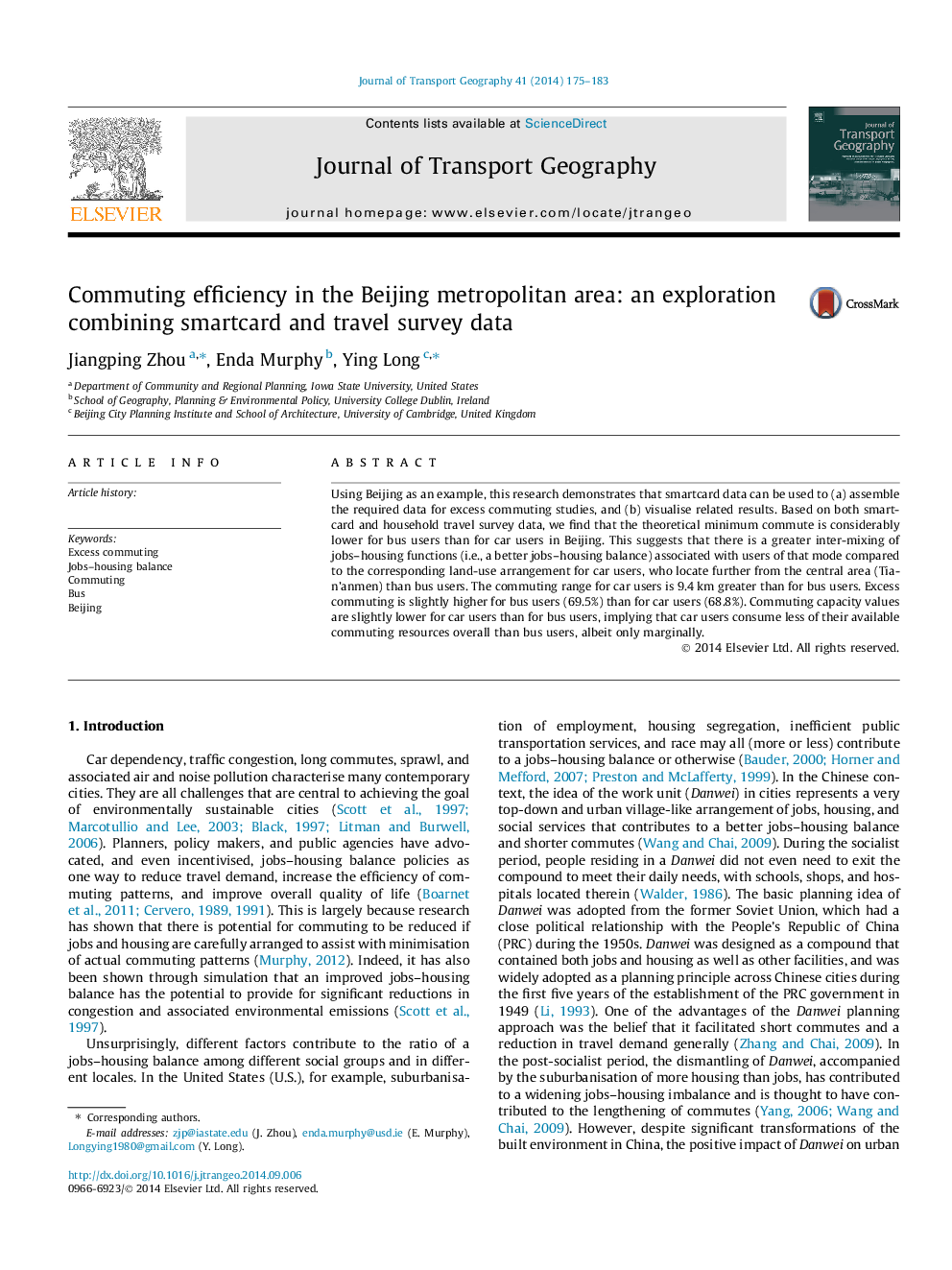| Article ID | Journal | Published Year | Pages | File Type |
|---|---|---|---|---|
| 7486025 | Journal of Transport Geography | 2014 | 9 Pages |
Abstract
Using Beijing as an example, this research demonstrates that smartcard data can be used to (a) assemble the required data for excess commuting studies, and (b) visualise related results. Based on both smartcard and household travel survey data, we find that the theoretical minimum commute is considerably lower for bus users than for car users in Beijing. This suggests that there is a greater inter-mixing of jobs-housing functions (i.e., a better jobs-housing balance) associated with users of that mode compared to the corresponding land-use arrangement for car users, who locate further from the central area (Tian'anmen) than bus users. The commuting range for car users is 9.4Â km greater than for bus users. Excess commuting is slightly higher for bus users (69.5%) than for car users (68.8%). Commuting capacity values are slightly lower for car users than for bus users, implying that car users consume less of their available commuting resources overall than bus users, albeit only marginally.
Keywords
Related Topics
Life Sciences
Environmental Science
Environmental Science (General)
Authors
Jiangping Zhou, Enda Murphy, Ying Long,
